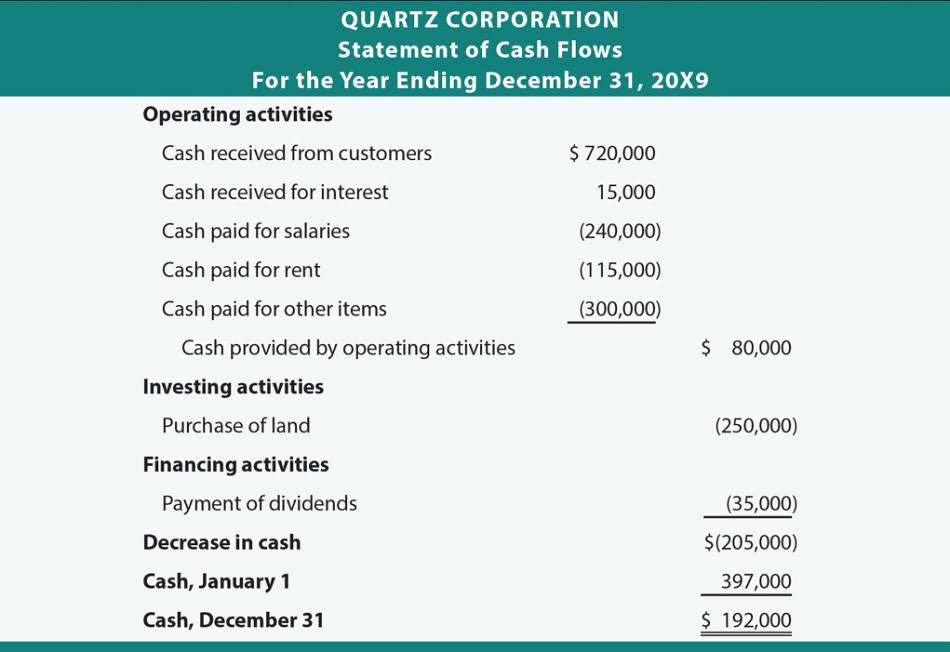Normal Debit and Credit Balances for the Accounts

There also does not have to be a correlation between when cash is collected and when revenue is recognized. A customer may not pay for the service on https://www.bookstime.com/ the day it was provided. Even though the customer has not yet paid cash, there is a reasonable expectation that the customer will pay in the future.
What is the Normal Balance for Owner’s Withdrawals or Dividends?
To show how the debit and credit process works within IU’s general ledger, the following image was pulled from the IUIE database. Employees who are responsible for their entity’s accounting activities will see a file such as the one below on more of a day-to-day basis. This general ledger example shows a journal entry being made for the payment (cash) of postage (expense) within the Academic Support responsibility center (RC). This account is a non-operating or “other” expense for the cost of borrowed money or other credit. When an account produces a balance that is contrary to what the expected normal balance of that account is, this account has an abnormal balance. A potential or existing investor wants timely information by which to measure the performance of the company, and to help decide whether to invest.
Monetary Measurement Concept
- This would mean that any uncertain or estimated expenses/losses should be recorded, but uncertain or estimated revenues/gains should not.
- After each semester or quarter, your grade point average (GPA) is updated with new information on your performance in classes you completed.
- In accounting, an account is a specific asset, liability, or equity unit in the ledger that is used to store similar transactions.
- This standard discusses fundamental concepts as they relate to recordkeeping for accounting and how transactions are recorded internally within Indiana University.
- As you know from Introduction to Financial Statements, each of these categories, in turn, includes many individual accounts, all of which a company maintains in its general ledger.
The normal balance can be either a debit or a credit, depending on the type of account. Understanding the normal balance of different accounts is crucial for accurately recording transactions. These retained earnings are what the company holds onto at the end of a period to reinvest in the business, after any distributions to ownership occur.
- He has been the CFO or controller of both small and medium sized companies and has run small businesses of his own.
- In other words, it cancels out part of the balance of the related Normal Balance account.
- A business can now use this equation to analyze transactions in more detail.
- This graphic representation of a general ledger account is known as a T-account.
- It allows for proper classification of transactions and ensures that financial statements reflect the true financial standing of the entity.
Equity and the Expanded Accounting Equation
Debits and credits differ in accounting in comparison to what bank users most commonly see. For example, when making a transaction at a bank, a user depositing a $100 check would be crediting, or increasing, the balance in the account. In accounting, an account is a specific asset, liability, or equity unit in the ledger that is used to store similar normal balance of accounts transactions. The going concern assumption assumes a business will continue to operate in the foreseeable future. However, one should presume the business is doing well enough to continue operations unless there is evidence to the contrary. For example, a business might have certain expenses that are paid off (or reduced) over several time periods.
- Table 3.1 shows the normal balances and increases for each account type.
- Depending on the account type, the sides that increase and decrease may vary.
- First, it can sell shares of its stock to the public to raise money to purchase the assets, or it can use profits earned by the business to finance its activities.
- The accurate recording of revenues is essential for assessing the company’s performance and profitability over a period.
A common misconception is that debit balances are inherently negative or represent losses, while credit balances are positive or indicative of gains. This misunderstanding stems from the association of these terms with banking transactions, where a debit decreases account balances and a credit increases them. In accounting, however, debits and credits are neutral terms that simply reflect the dual-sided nature of recording transactions. They do not signify good or bad financial events but are tools to maintain the equilibrium of the accounting equation.
Examples of Debits and Credits in a Sole Proprietorship
It’s the column we would expect to see the account balance show up. A normal balance is the side of an account a company normally debits or credits. This means that contra accounts reduce the net amount reported on the financial statement and business transaction.
Separate Entity Concept
When an expense is incurred, the debit entry is recorded on the left side of the T-account and the credit entry is recorded on the right side. You can use a T-account to illustrate the effects of debits and credits on the expense account. This means that when you make a credit entry to one of these accounts, it increases the account balance. For example, if an asset account has a debit balance, it means that more money was spent on that asset than was received from selling it. The Financial Accounting Standards Board had a policy that allowed companies to reduce their tax liability from share-based compensation deductions. This led companies to create what some call the “contentious debit,” to defer tax liability and increase tax expense in a current period.
- Next, we’ll move on to adjusting these accounts with journal entries.
- Liabilities are obligations to pay an amount owed to a lender (creditor) based on a past transaction.
- These retained earnings are what the company holds onto at the end of a period to reinvest in the business, after any distributions to ownership occur.
- Explore how it affects financial statements and reporting accuracy.


